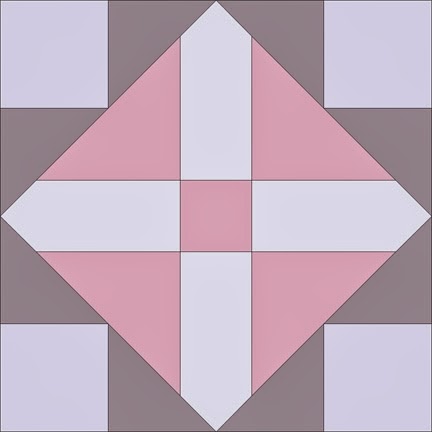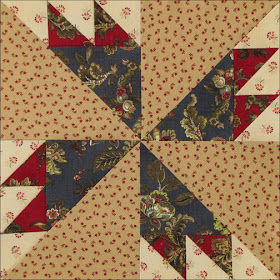Block # 4: Thrifty by Becky Brown for Cassandra Leigh Austen,
Jane's mother.
Silhouette of Cassandra Leigh Austen (1739-1827)
Jane’s letters to sister Cass
give us a view of two young women occasionally exasperated with their resident
mother. Historians and critics have linked the elder Cassandra Austen to the
embarrassing Mrs. Bennet in Pride and Prejudice.
Mrs. Bennet by C.W. Brock, about 1890
He seems to have used Mrs. Austen's profile
and cap for a model.
Mrs. Austen may have had a few
traits in common with the fictional and very silly Mrs. Bennet but Mrs. Austen
was actually a witty, kind and industrious woman.
True: She may have had more than her share of illnesses, and exaggerated them to manipulate her unconventional daughters (she lived to be 87). True: Her hopes for Cass and Jane were probably quite different from those the girls entertained. There may have been some nagging, too many reminders about propriety and a few threats over a fluttering heart or a persistent headache.
True: She may have had more than her share of illnesses, and exaggerated them to manipulate her unconventional daughters (she lived to be 87). True: Her hopes for Cass and Jane were probably quite different from those the girls entertained. There may have been some nagging, too many reminders about propriety and a few threats over a fluttering heart or a persistent headache.
The Colic by George Cruikshank.
The elder Cassandra
seems to have suffered from digestive disorders.
But had her younger daughter never invented Mrs. Bennett, we might remember Mrs. Austen as an entertaining amateur poet and an organized
woman who raised a large family well on a clergyman's salary.
Thrifty by Dustin Cecil
Cassandra Leigh, like her husband George, was a poor relative from good family. Kin had money, promised money and occasionally gave, willed and loaned money, but the Austens supplemented their two parish livings of £210 pounds a year as farmers, landlords and school keepers.
Steventon Rectory drawn from memory by
Jane's grand-niece Julia LeFroy.
Jane, the sixth of eight, was born here when her mother was about 36.
No
matter how thrifty Mrs. Austen tried to be, the family was often in debt. As
her daughter wrote in The Watsons:
“There are some circumstances
which even women cannot control. Female
economy will do a great deal… but it cannot turn a small income into a large
one.”
Thrifty by Becky Brown
Becky, the fan of fussy-cutting, has cut the center square
B, which finishes to 4", like this:
If you want a fussy cut, mitered center
cut a 5-1/4" square (or two) and then
cut it up into 4 triangles.
A pound
A guinea
Money in Jane Austen's England is confusing to Americans. The basics: one pound note was worth 20 shillings while a guinea, a gold coin, was worth 21 shillings (or more---based on the price of gold). Guineas were not only worth more literally, they had a cachet. Paying a debt in guineas added a flourish.
Cassandra Austen and daughter Cassandra
are buried in Chawton
BlockBase #1602
We can remember Mrs. Austen with Thrifty---four patches in a nine-patch---given that name by the Kansas City Star's quilt pattern column in 1939.
Cutting a 12" Finished Block
A - Cut 16 squares 2-1/2" x 2-1/2", half darks and half lights.
B - Cut 4 light and 1 dark of the larger squares 4-1/2" x 4-1/2".
Sewing:
Thrifty by Bettina Havig































































